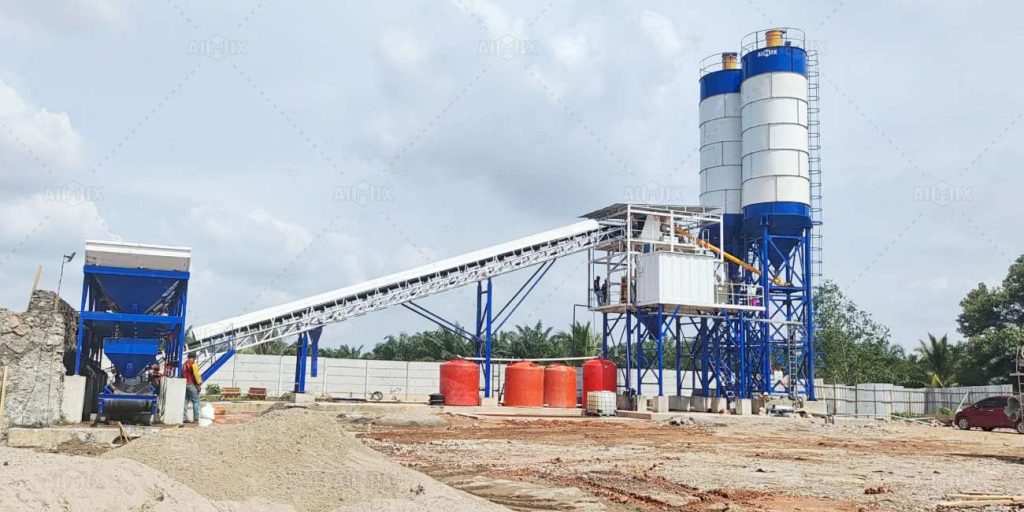In the rapidly growing construction industry, the cost of setting up and operating a ready mix concrete (RMC) plant is influenced by multiple factors, with safety standards playing a pivotal role. A ready mix concrete plant is a complex facility where raw materials such as cement, aggregates, water, and admixtures are mixed in precise proportions to produce high-quality concrete. While operational efficiency, production capacity, and quality control are key considerations, adhering to safety standards directly impacts both initial investment and ongoing operational costs.

Safety Standards: An Essential Investment
Safety in a ready mix concrete plant is not optional; it is a regulatory and ethical necessity. From machinery operation to chemical handling, the plant environment poses several risks. Ensuring compliance with local and international safety standards requires investment in protective equipment, proper signage, emergency response systems, and safety training programs. These investments inevitably affect the ready mix concrete plant cost, but they provide long-term benefits by reducing accidents, improving worker productivity, and minimizing downtime.
For example, installing protective guards around mixers and conveyors, implementing automated batching systems, and maintaining proper ventilation in storage areas increases upfront expenditure. However, these measures prevent costly accidents and potential legal liabilities, ultimately saving money in the long run. Ready mix concrete plant suppliers often emphasize that clients consider safety infrastructure as an integral part of plant design, rather than an optional addition.
Safety Equipment and Operational Protocols
A significant portion of the ready mix concrete plant cost is allocated to safety equipment. Personal protective equipment (PPE) such as helmets, gloves, safety goggles, and ear protection is mandatory for all plant personnel. Additionally, safety protocols for machinery operation, material handling, and chemical usage must be established. For instance, high-capacity cement silos and aggregate storage bins require safety ladders, railings, and fall protection systems to prevent accidents.
Operational protocols, including lockout-tagout procedures, emergency shutdown systems, and regular maintenance schedules, further increase initial and ongoing costs. However, these measures ensure compliance with occupational safety standards and reduce the risk of plant stoppages due to accidents or regulatory violations. Plant operators who prioritize safety often experience smoother operations and fewer disruptions, which indirectly lowers overall operational costs.

Training: A Key Component
Training is another crucial factor influencing ready mix concrete plant cost. A well-trained workforce is essential for safe and efficient plant operation. This includes training on machinery handling, emergency procedures, chemical safety, and environmental regulations. While training programs may require significant investment in terms of time and resources, they prevent human errors that could lead to accidents or equipment damage.
Ready mix concrete plant suppliers typically provide training modules as part of their service packages. They guide plant owners on the best practices for staff education, which not only enhances safety but also ensures consistent production quality. For those looking to understand how to start an RMC plant, prioritizing training during the planning phase is critical to balance cost and operational efficiency.
Safety Standards and Plant Location
Safety standards also influence site selection and layout planning, which in turn impacts ready mix concrete plant cost. For instance, a plant located near densely populated areas may require additional protective measures such as sound barriers, dust suppression systems, and traffic management protocols. Similarly, in regions with heavy rainfall or seismic activity, structural reinforcements and weatherproofing measures may be necessary.
In Bangladesh, where urban construction is booming, ready mix concrete plants in Bangladesh must adhere to strict safety and environmental regulations. These standards affect the cost of land preparation, civil construction, and installation of safety infrastructure. Although such measures raise the initial investment, they ensure long-term compliance and prevent legal complications that could be far more expensive.

Long-Term Cost Benefits
While safety measures add to the ready mix concrete plant cost, they contribute to long-term savings. Reduced workplace accidents lead to lower insurance premiums, fewer compensation claims, and minimal production losses due to injuries or regulatory shutdowns. Moreover, safety compliance enhances the plant’s reputation, attracting more clients and investors who prioritize responsible construction practices.
For plant owners considering how to start an RMC plant, integrating safety measures from the outset is more cost-effective than retrofitting systems later. Engaging experienced ready mix concrete plant suppliers ensures that safety considerations are built into the design, layout, and equipment selection, optimizing both cost and performance.
Conclusion
Safety standards are a critical factor that shapes the cost structure of a ready mix concrete plant. From equipment and operational protocols to training and site-specific safety measures, investments in safety influence both upfront capital expenditure and long-term operational efficiency. For aspiring entrepreneurs wondering how to start an RMC plant, understanding the interplay between safety and cost is essential for successful planning.
In Bangladesh and other growing construction markets, adhering to stringent safety regulations is not only mandatory but also strategically advantageous. Partnering with reliable ready mix concrete plant suppliers ensures that safety, quality, and efficiency are balanced, creating a sustainable and profitable operation. Ultimately, the costs associated with safety standards should be viewed as a strategic investment that protects workers, enhances production, and strengthens the long-term viability of the RMC plant.